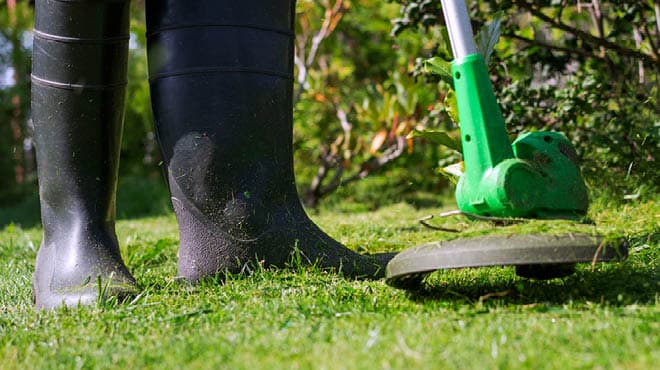Aim for safety in your tree stand

Hunting is a popular activity in the U.S. It is a great opportunity for people of all ages to spend time in nature while making memories with loved ones. I am an avid hunter and understand the camaraderie of spending time together and teaching a younger generation to embrace the sport.
Overall, hunting can be a safe and enjoyable time. However, it poses some dangers, and tree stand injuries are common throughout the hunting season. Each year, between 3,000 to 4,000 people in the U.S. are injured after falling out of a tree stand.
Tree stand falls can lead to significant injuries like broken bones, concussions and internal bleeding. Occasionally, a fall can lead to a head injury or spine damage that results in paralysis.
Most trauma injuries, including falls from tree stands, are preventable. They are almost always related to three factors: alcohol or drug use, risk-taking behaviors, and poor judgment.
Some hunters unintentionally make poor judgments or behave in a risky manner. The most common is not wearing a safety harness.
It could be that they set up a stand in an unsafe way or rush to take advantage of the last minutes of daylight. Perhaps the stand is not in good working order, or the straps are worn. Rushing or not being aware of the surroundings can increase the risk of injuries.
Here's what hunters can do to mitigate tree stand injuries by avoiding poor judgment and risk-taking behaviors:
Before the hunt
Like other hunters, I spend months preparing for an upcoming hunting season.
In addition to getting your license, scouting spots and setting up trail cameras, develop a safety plan for the season, including these parts:
- Invest in a five-point harness.
A harness is the cornerstone of safety equipment if you use a tree stand. Look for one that fits you well and most importantly one you will wear while hunting. - Find the perfect tree.
While scouting locations before season, I recommend that you look for a live tree that will support your weight. You may find what I call a "squirrel tree." This tree is in a prime spot for spotting wildlife but is too small to support your weight. It is way better to find a different spot or tree. - Rest up.
Accidents can happen when people are tired, including falling asleep in the stand. Try to get at least seven hours of sleep the night before season opener. - Skip alcohol and drugs.
Hunting while under the influence of alcohol or drugs can be a deadly combination. Avoid drinking or drugs throughout the hunt, especially the night before season opener. - Assess your physical abilities.
Safely climbing in and out of a stand requires considerable physical effort. You may need to skip the tree stand for a year, or indefinitely, if you recently had surgery, faced a health crisis, or just do not have the strength or stamina needed anymore. - Provide hunt details.
Before you head out into the wood, tell your family or friends where you will be and what time you expect to return. Keep in contact throughout the day through text messages, and make a point to report when you are safely back on the ground. Cell signal coverage can be spotty, so duplicate safety by drawing a map of your location as well.
Safe climbing
The most dangerous time for falls is when hunters are climbing in and out of stands.
Remember these tips as you make your way up the tree:
- Warm up.
Climbing is always easier and safer when your muscles are warmed up. This raises your body temperature and increases blood flow. You can warm up on your walk to the stand. Walking slowly avoids spooking the deer and gives you the opportunity to be warm when you arrive at your stand without being too hot. - Use a climbing rope.
Remain continuously strapped to the tree with a climbing rope. Use a climbing rope equipped with the classic prusik knot and connect it to your five-point harness using a carabiner. A Prusik knot slides easily along the rope but will tighten fully if you slip. - Remember three contact points.
As you are climbing the tree, make sure that three of your appendages are always attached to the tree. This means one hand and two feet or two hands and one foot. This increases the chances that you can catch yourself if you slip or lose hold. - Climb higher than the stand.
As you ascend, climb a few steps higher than the seat of your stand. This gives you a better angle to get to the seat and allows you to check that the stand is secure before transitioning. - Use the rope to lift or lower your weapon and pack.
Focus on getting yourself up and down from the tree stand without worrying about your weapon. Gently raise and lower bows, rifles and packs with separate ropes. - Clip yourself in.
Secure your harness to the tree stand once you are firmly in place. Only then can you safely disconnect your harness from the climbing rope. While strapped to the tree stand, you still will have freedom of movement.
Coming down from the tree involves the same steps in reverse order. Lower weapons and packs slowly to the ground first. Then take extra care to secure your harness to the climbing rope before unclipping from the stand and swinging your legs out to the ladder. Finally, contact your family or hunting party after you have safely reached the ground.
Watch this video for more tips on tree stand safety:
You are responsible for your own safety. Don't let risk-taking behaviors or poor judgment lead to a tree stand injury. Know and respect your physical limitations and take extra time to make sure your safety gear is in good condition and used properly.
Always call 911 in an emergency.
David Ciresi, M.D., is a general and trauma surgeon in Eau Claire, Wisconsin. He has been an avid hunter for years.



